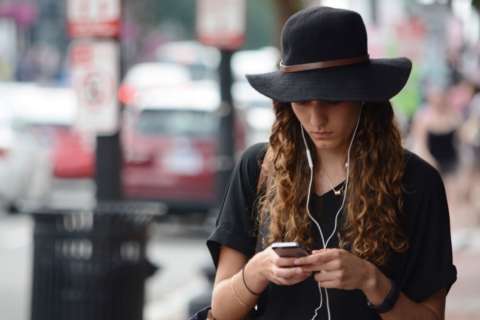This is Part 2 of “Robo Rage,” WTOP’s series on robocalls and their impact on the D.C. area. Read Part 1. Read Part 3.
WASHINGTON — There’s a robocall trend ramping up in the D.C. area: scams coming from what look like local numbers.
It’s called “neighborhood spoofing,” and it’s an attempt to lure consumers by using local numbers, to increase the chance that they’ll pick up the phone. For some, it’s tempting to answer because the number sequence of the incoming call looks similar to a friend’s number, or even to their own.
“Spoofing is essentially where an unscrupulous robocaller will mask the true phone number they are calling from. They’ll use your area code, or maybe the first three digits of your phone number, to make it seem it’s coming from somebody you might trust, a neighbor or someone from the neighborhood,” Federal Communications Chairman Ajit Pai told WTOP.
“What you should do is let it roll to voicemail, but that can be hard to do, especially if you’re expecting a call,” Pai said.
“You get the call right when you’re walking into a movie, or sitting down to dinner and it’s like: ‘Is it important? It’s a number from my neighborhood. Is it my babysitter’s other phone?’ You really think, ‘I’ve got to deal with it,'” said Alex Quilici, CEO of YouMail, a call-blocking app that he said provides national data to the FCC.
The sneaky trend is putting a new importance on voicemail. Most people can assume if someone is calling from a legitimate number, they’ll leave a message. However, for some entrepreneurs and contractors who rely on their cellphones for new business, ignoring an unknown number is not an option.
“It does tend to make you reticent to answer, but for me, I still answer,” said TTR Sotheby’s Vice President Barbara Nalls.
As a realtor, Nalls works in an industry where timing is everything and calls can’t be missed. She acknowledges that a call from an unknown number could be an offer on a listing or even a client calling from another number. But more often, she said, it’s a robocall interrupting an important conversation or negotiation.
“I understand they have a living to make, too. And I do my best to be polite on the phone, even to a robocaller, but good God. You just feel violated,” Nalls said.
There are 80 to 100 robocall scams going on at any given time, according to Quilici. Nalls uses a Google cloud service to help screen her calls. It’s among a number of options consumers have to reduce and prevent robocalls from reaching their phones.
“Aside from a service, you really do have to change your behavior. You can’t jump and answer every call. And you really do have to do some homework. Don’t just call numbers back. That’s how you get into trouble,” Quilici said.
Some call-blocking apps and cloud services allow users to search the unknown number. However, for those who’d rather not download an app, the same result can be reached by searching the unknown number in a browser to see whom it’s registered to.
Neighborhood spoofing is among the most successful scams, because robocalling companies know the numbers are hard to track, according to Pai. The Robocall Task Force is working to stop it by developing the technology to enable call authentication.
“Making sure that there’s essentially a digital fingerprint for every call that is made so that you know when you get a call on your phone and you see that phone number, you’ll know it’s a person actually assigned that phone number,” Pai said of call authentication.
The FCC has been working with mobile carriers since March 2017, when the agency voted to give call providers more power to block illegitimate calls and take part in the fight against robocalls.
Here are some app suggestions and details on how to block calls:








